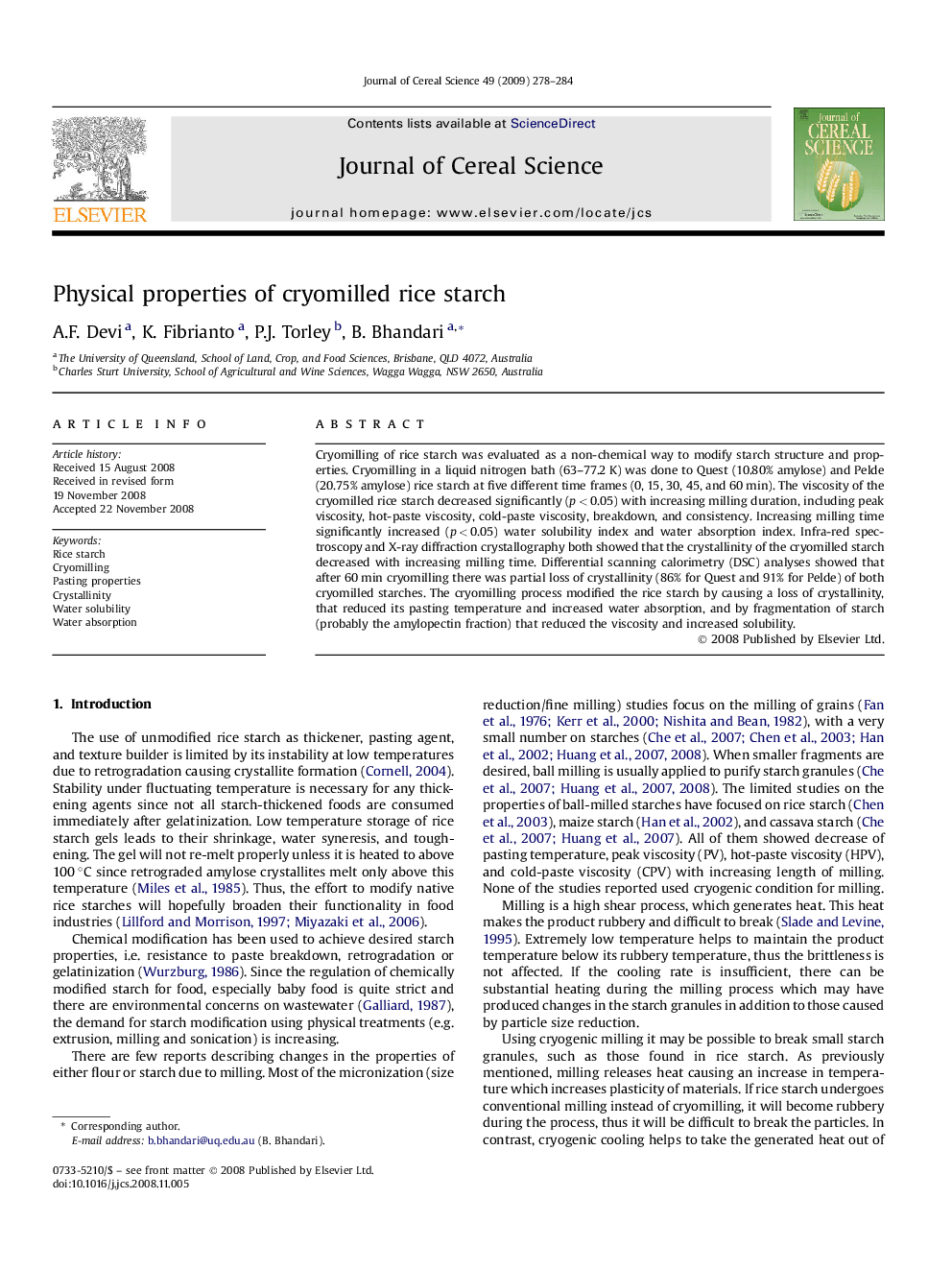| Article ID | Journal | Published Year | Pages | File Type |
|---|---|---|---|---|
| 4516682 | Journal of Cereal Science | 2009 | 7 Pages |
Cryomilling of rice starch was evaluated as a non-chemical way to modify starch structure and properties. Cryomilling in a liquid nitrogen bath (63–77.2 K) was done to Quest (10.80% amylose) and Pelde (20.75% amylose) rice starch at five different time frames (0, 15, 30, 45, and 60 min). The viscosity of the cryomilled rice starch decreased significantly (p < 0.05) with increasing milling duration, including peak viscosity, hot-paste viscosity, cold-paste viscosity, breakdown, and consistency. Increasing milling time significantly increased (p < 0.05) water solubility index and water absorption index. Infra-red spectroscopy and X-ray diffraction crystallography both showed that the crystallinity of the cryomilled starch decreased with increasing milling time. Differential scanning calorimetry (DSC) analyses showed that after 60 min cryomilling there was partial loss of crystallinity (86% for Quest and 91% for Pelde) of both cryomilled starches. The cryomilling process modified the rice starch by causing a loss of crystallinity, that reduced its pasting temperature and increased water absorption, and by fragmentation of starch (probably the amylopectin fraction) that reduced the viscosity and increased solubility.
